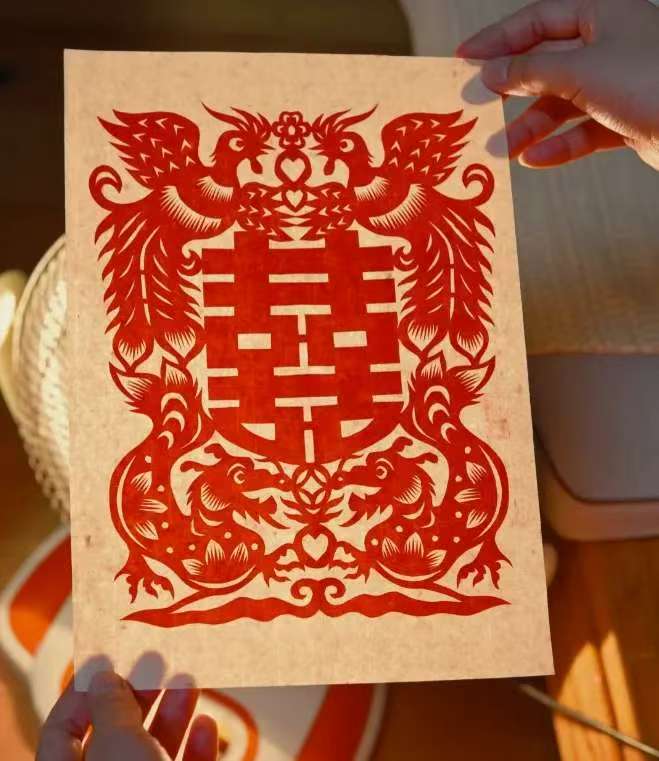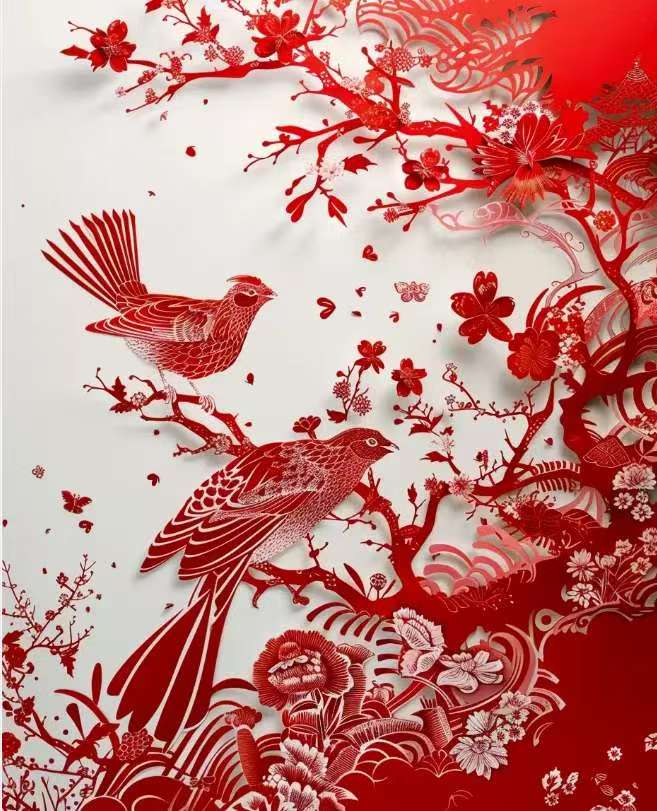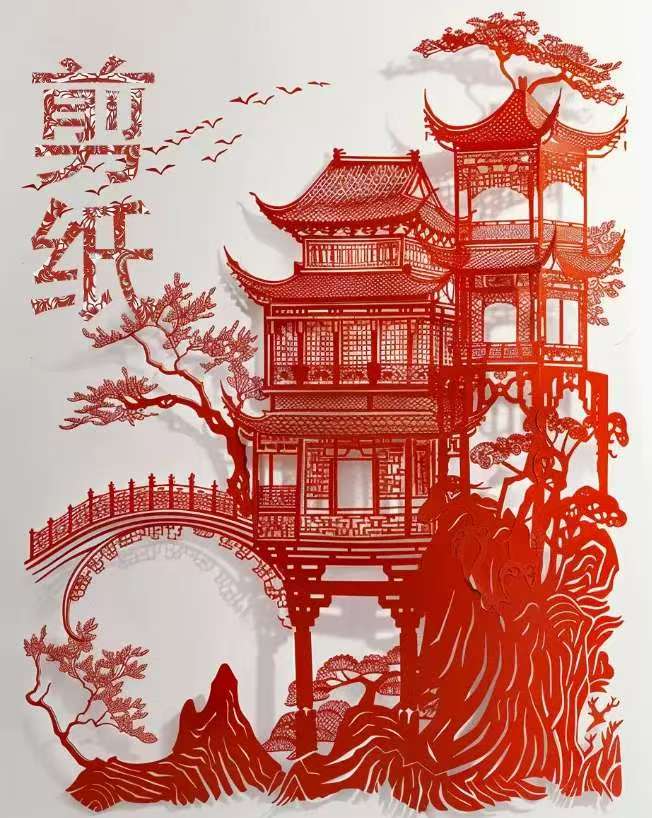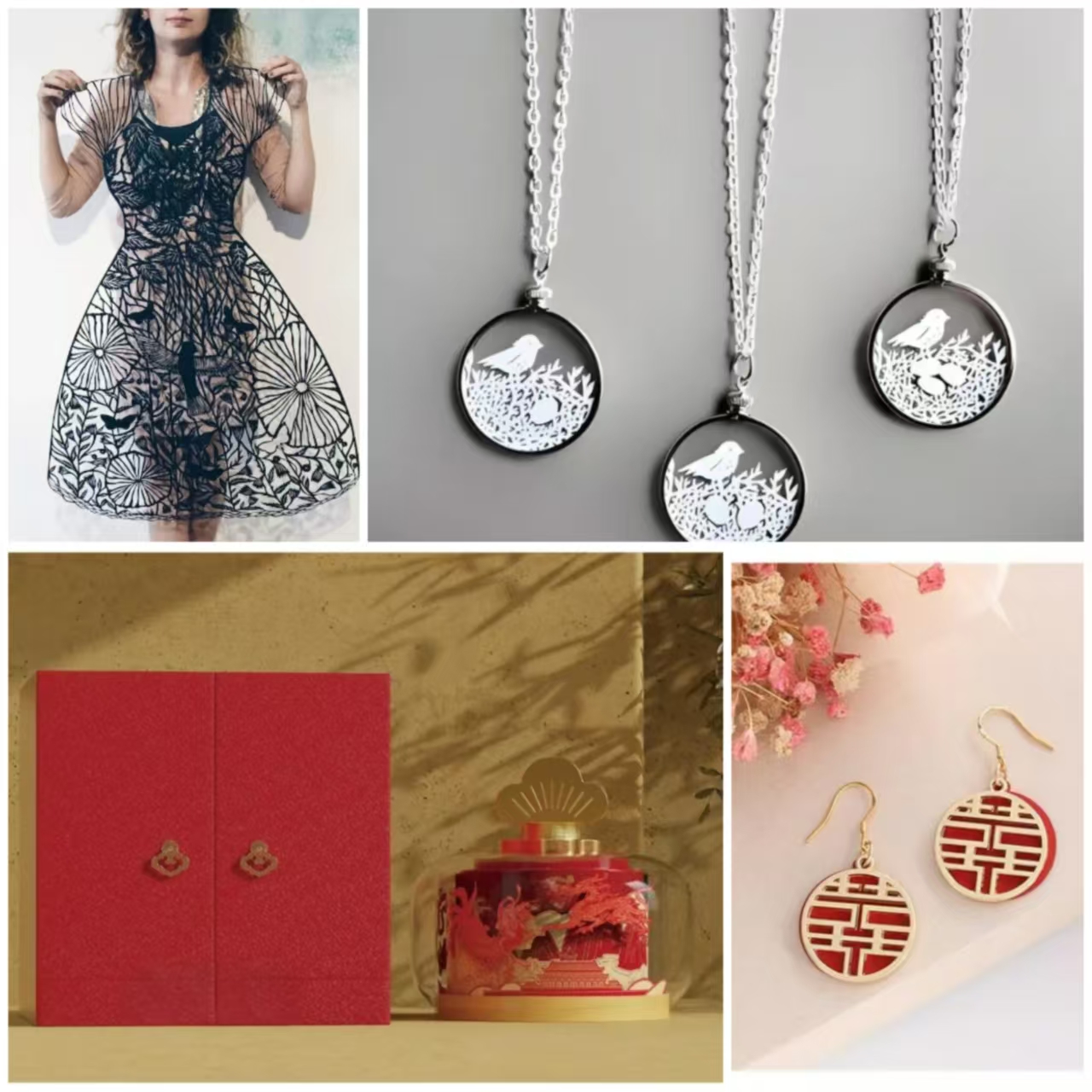Paper-cutting art is one of the oldest forms of folk art in China. As a type of hollow art, it provides a visual sense of transparency and aesthetic enjoyment. Paper-cutting involves using scissors to cut paper into various patterns, such as window flowers, door decorations, wall art, ceiling decorations, and lantern cut-outs. During festivals or weddings, Chinese people decorate their homes by pasting beautiful and vibrant paper cuts on windows, walls, doors, and lanterns, enhancing the festive atmosphere. Through the simple means of a pair of scissors and a piece of paper, Chinese paper-cutting expresses a wide range of human emotions and experiences in daily life.
Long before the invention of paper, the Chinese used thin materials to create hollow art effects through techniques such as carving, piercing, and cutting on materials like leather, gold leaf, silk, and even leaves, using these decorative pieces to beautify their lives or accompany social customs. After Cai Lun’s invention of papermaking during the Eastern Han Dynasty, better material conditions were provided for the development of paper-cutting art. Archaeological findings indicate that China’s earliest paper-cutting works date back over 1,500 years.
Paper-cutting has a broad grassroots foundation in China and is deeply integrated into the social lives of diverse ethnic groups, serving as an essential component of various folk activities. The enduring visual images and forms within paper-cutting carry rich cultural and historical information unique to China, reflecting the social consciousness, moral values, practical experiences, life ideals, and aesthetic tastes of the general populace. It possesses multiple social values, including cognitive, educational, expressive, emotional, entertaining, and interpersonal aspects.
Over time, paper-cutting art has continuously evolved and developed in China’s folk culture, merging with local customs and lifestyles. Distinct characteristics have emerged in different regions, such as the bold and unrestrained style of Northern paper-cutting and the exquisite and delicate style of Southern paper-cutting. The themes covered are extremely varied, encompassing mythology, flowers, birds, fish, insects, and auspicious meanings, making it widely loved by people.
In modern times, the Chinese people have embraced paper-cutting as a primary element, incorporating contemporary trends and integrating this art form into mediums such as short video production, modern fashion, packaging, and accessory design. This allows the intangible cultural heritage of paper-cutting to keep pace with the times, creating more value and wealth for the people while also better inheriting Chinese culture.



